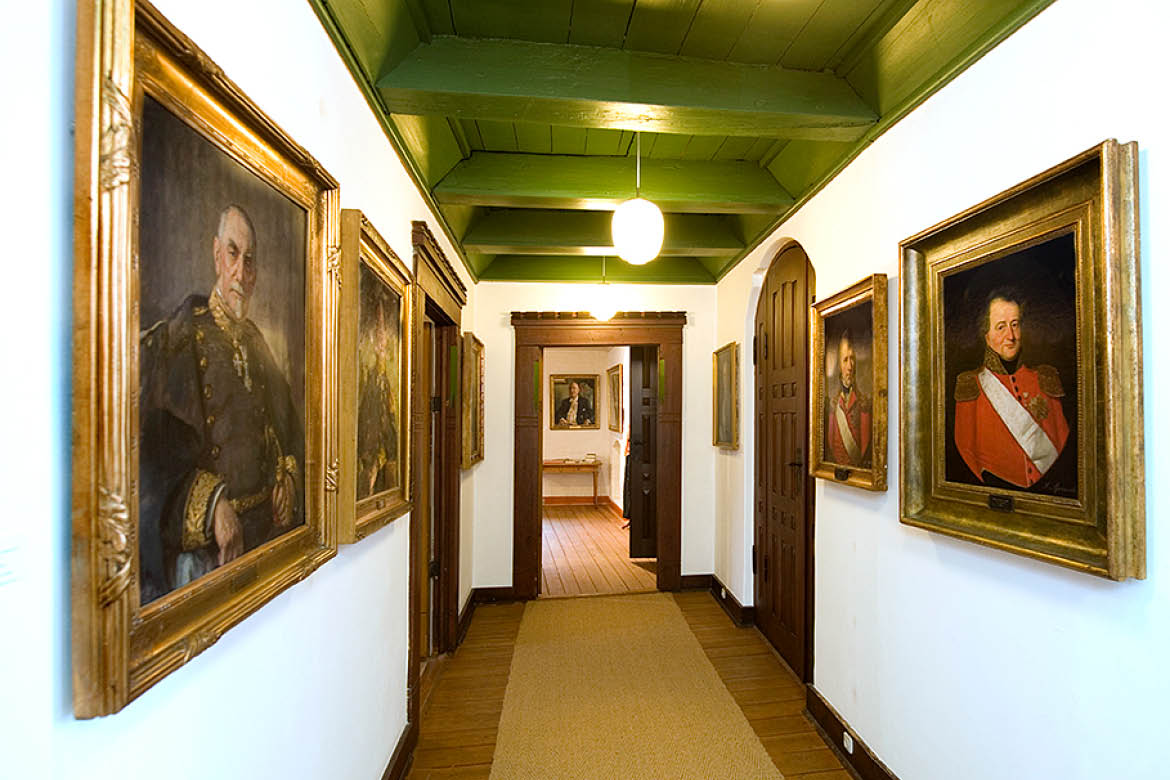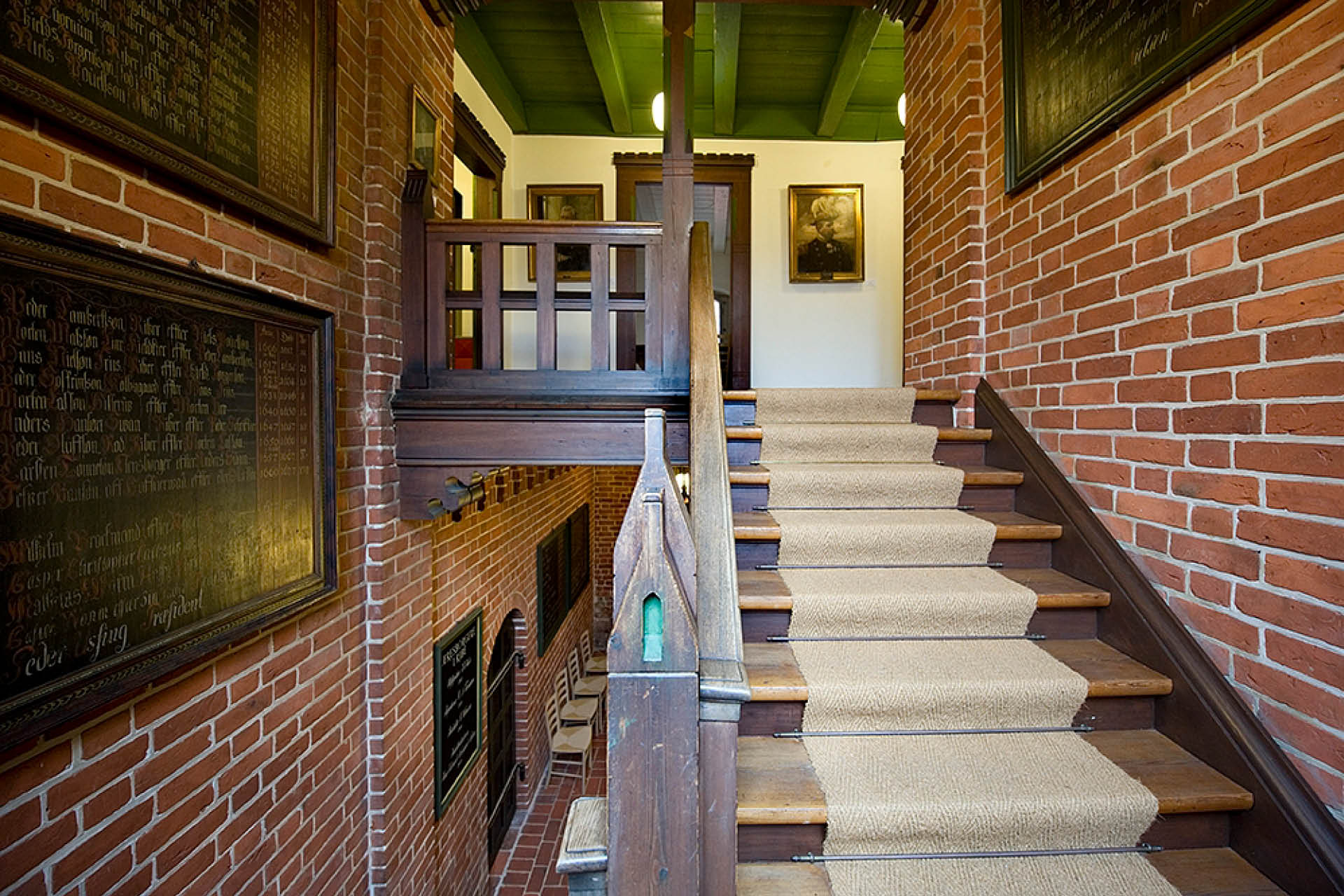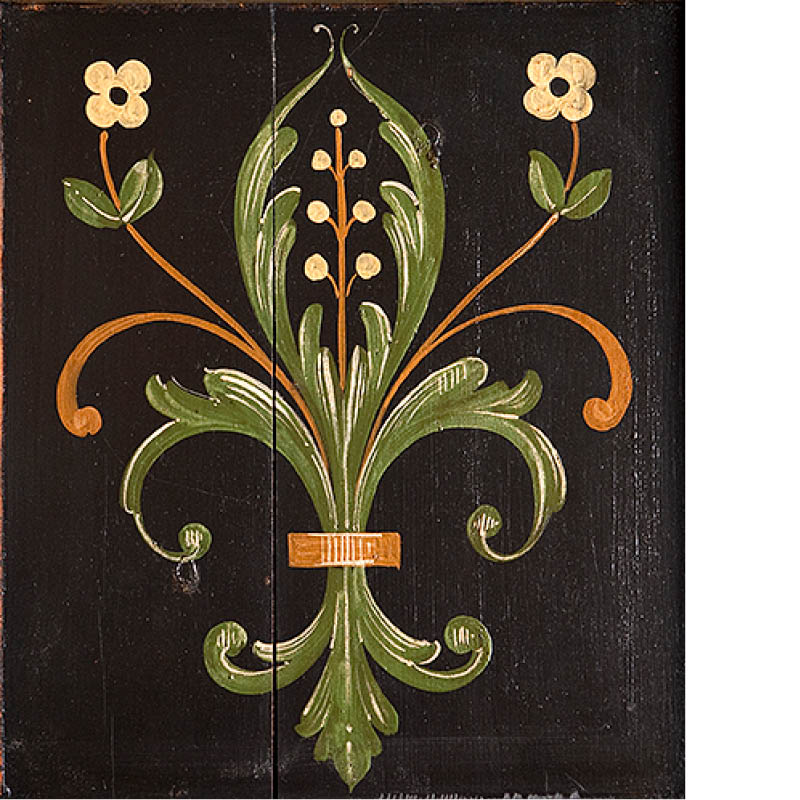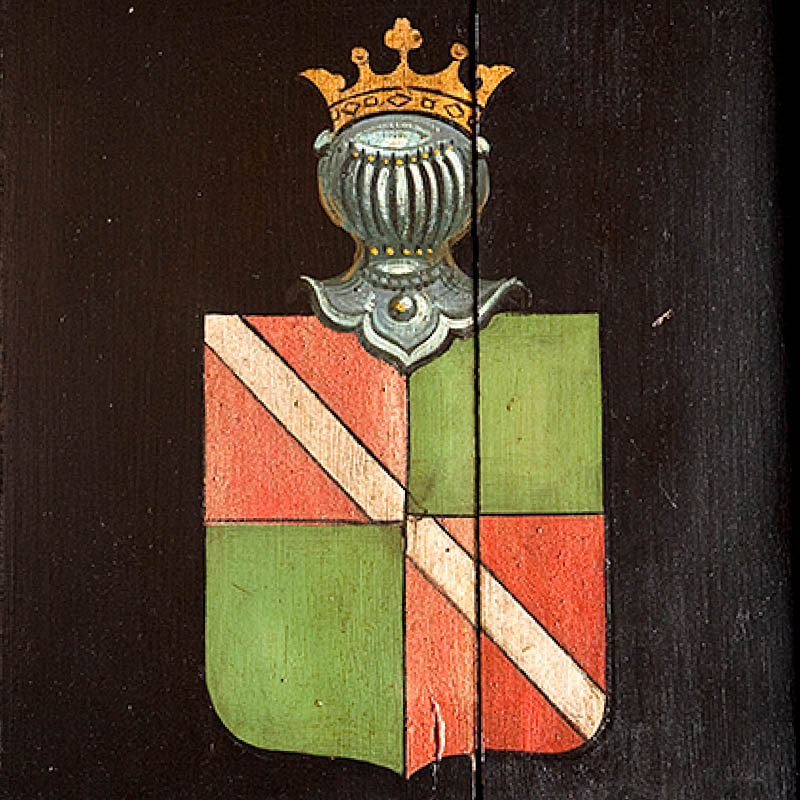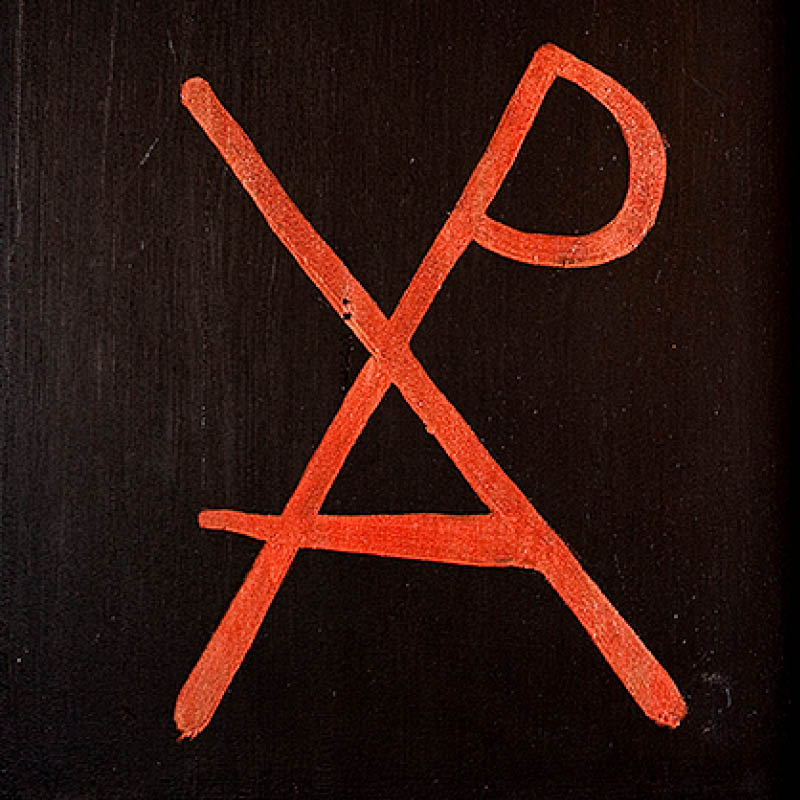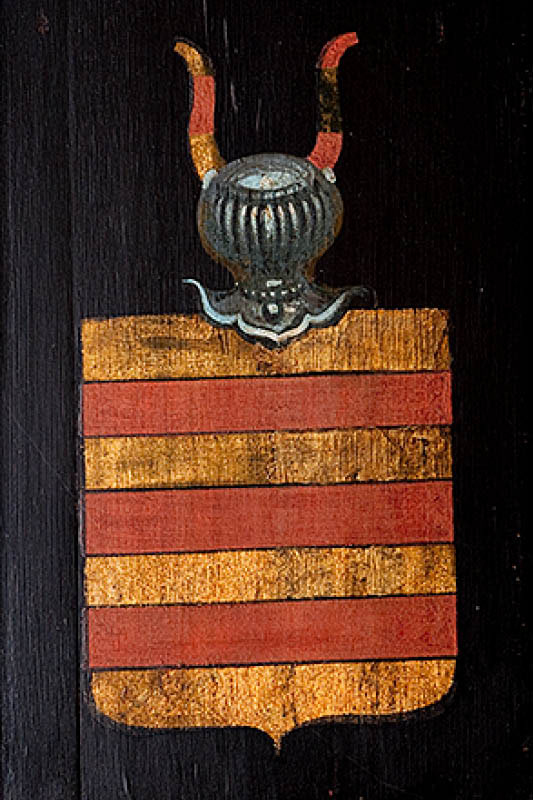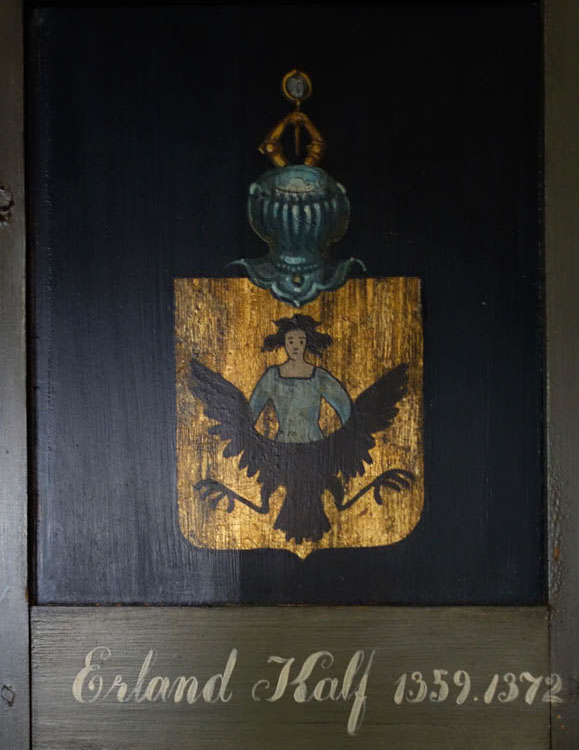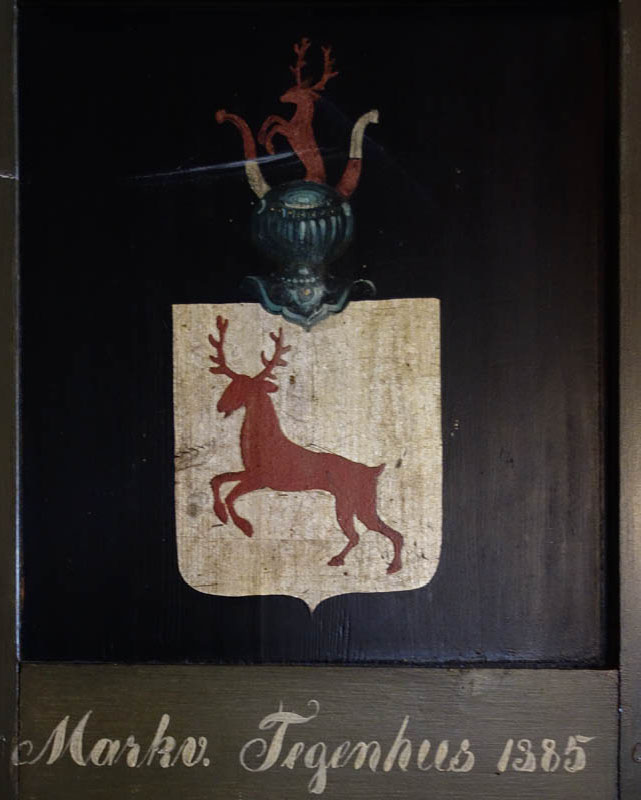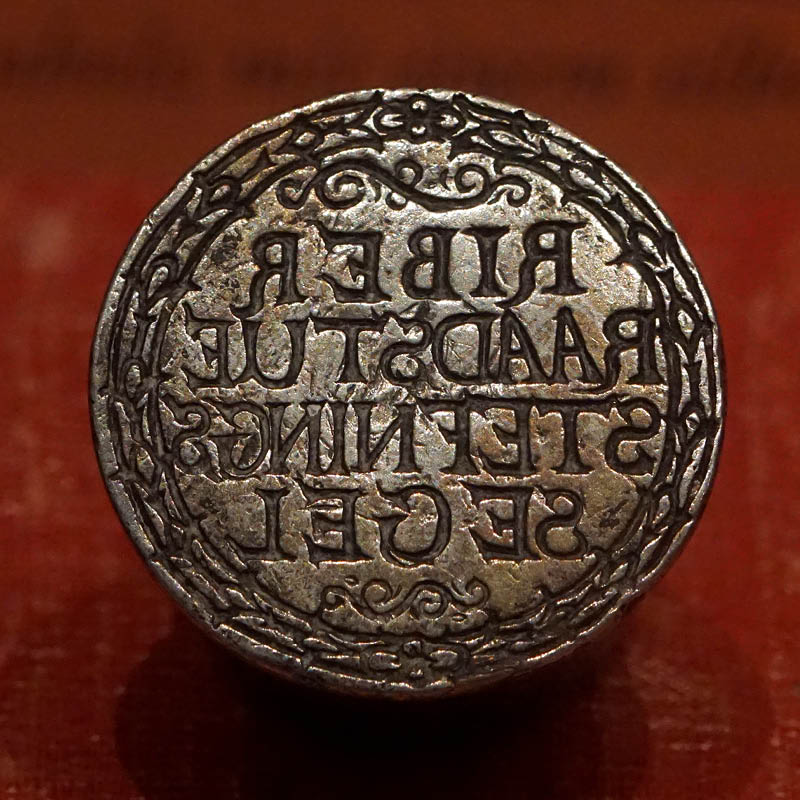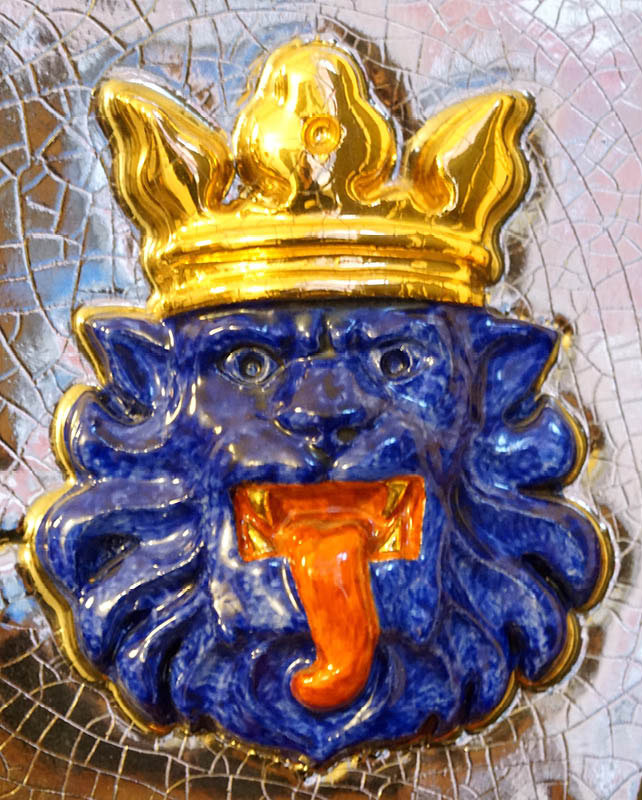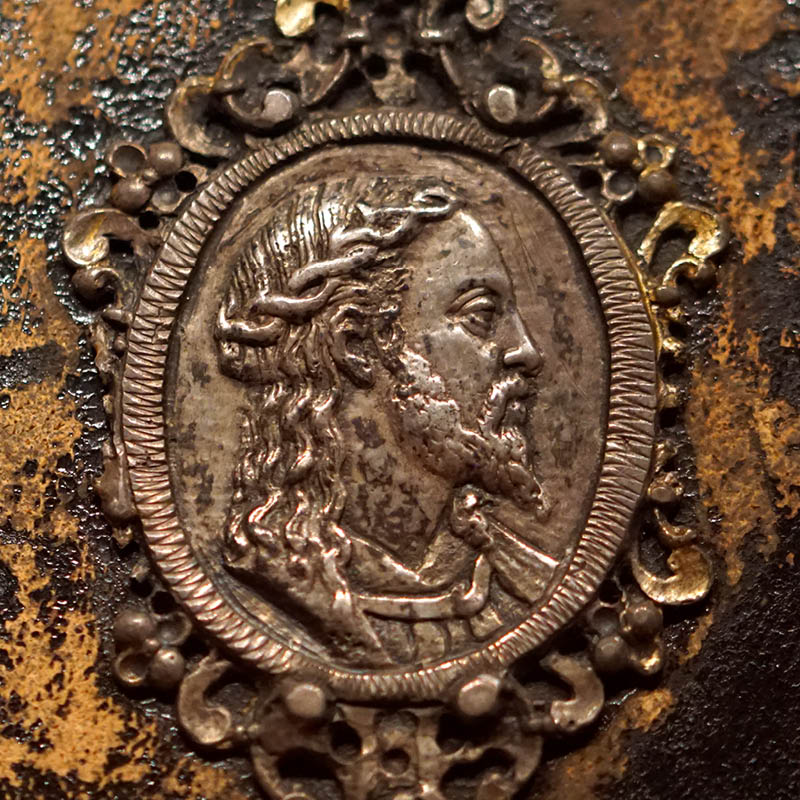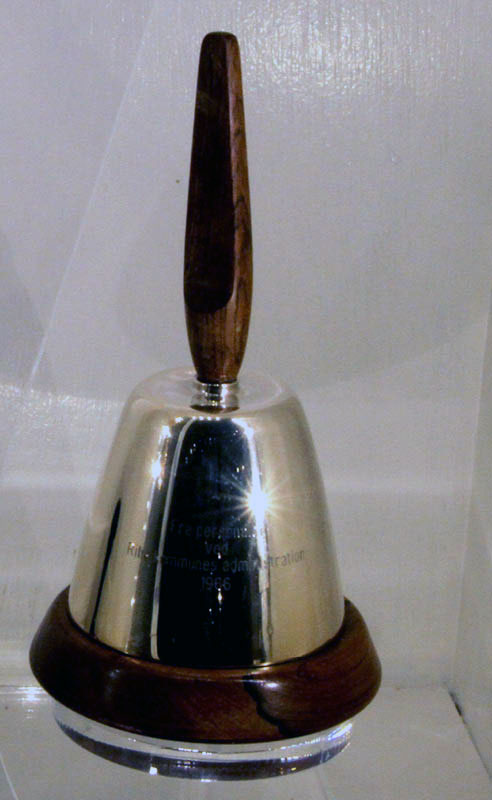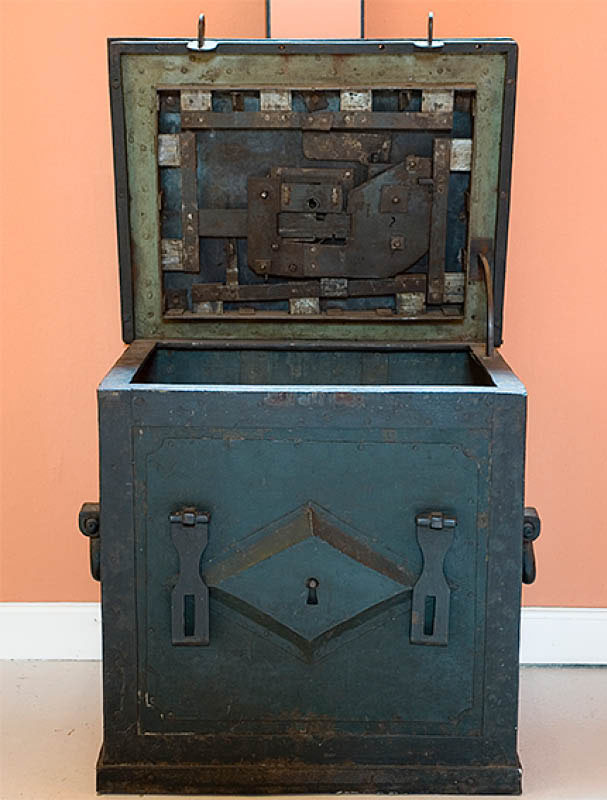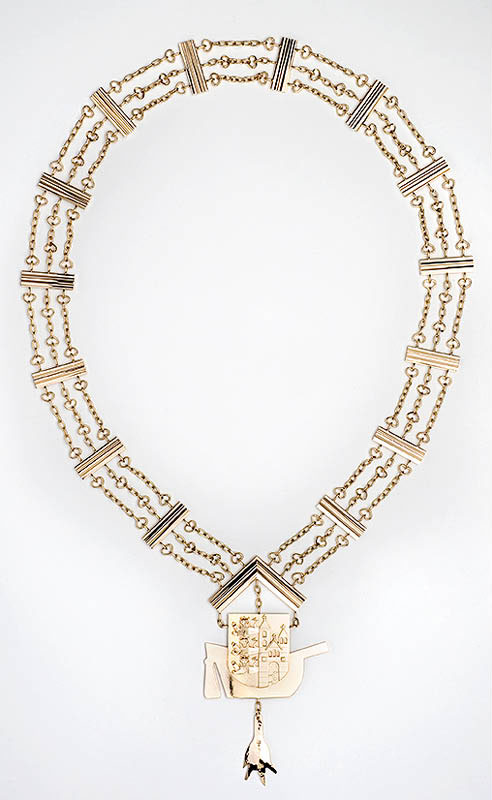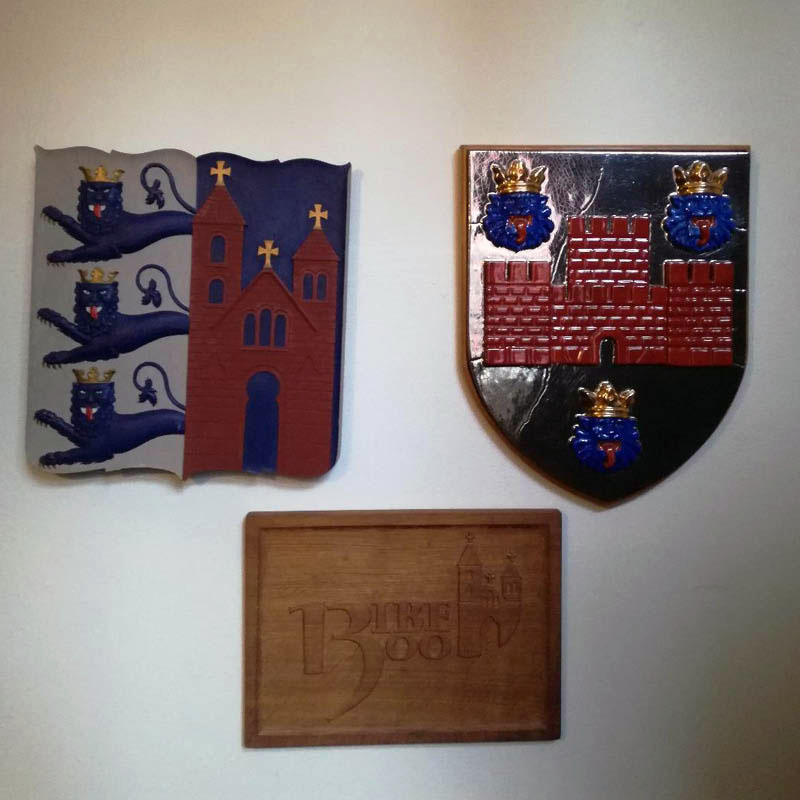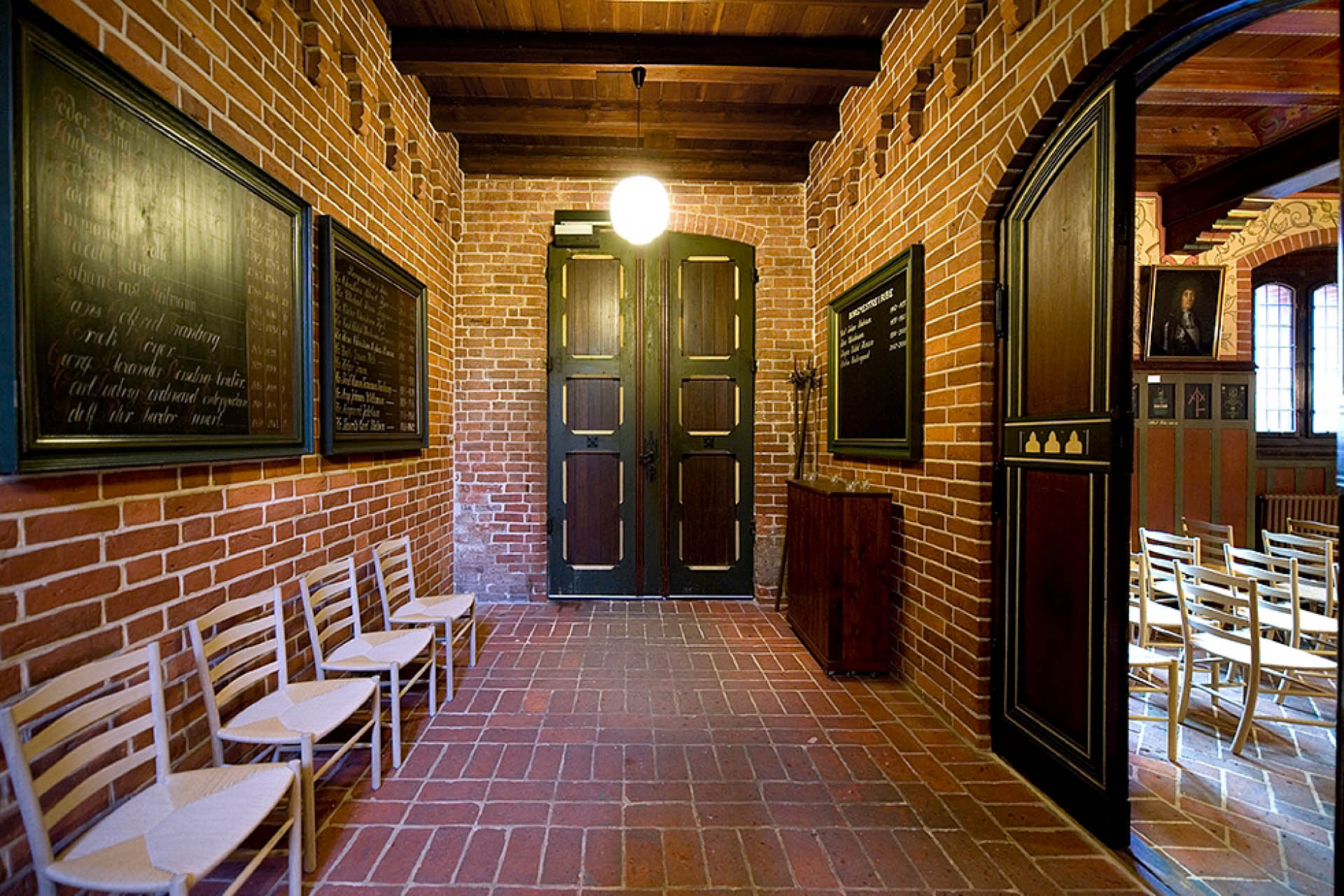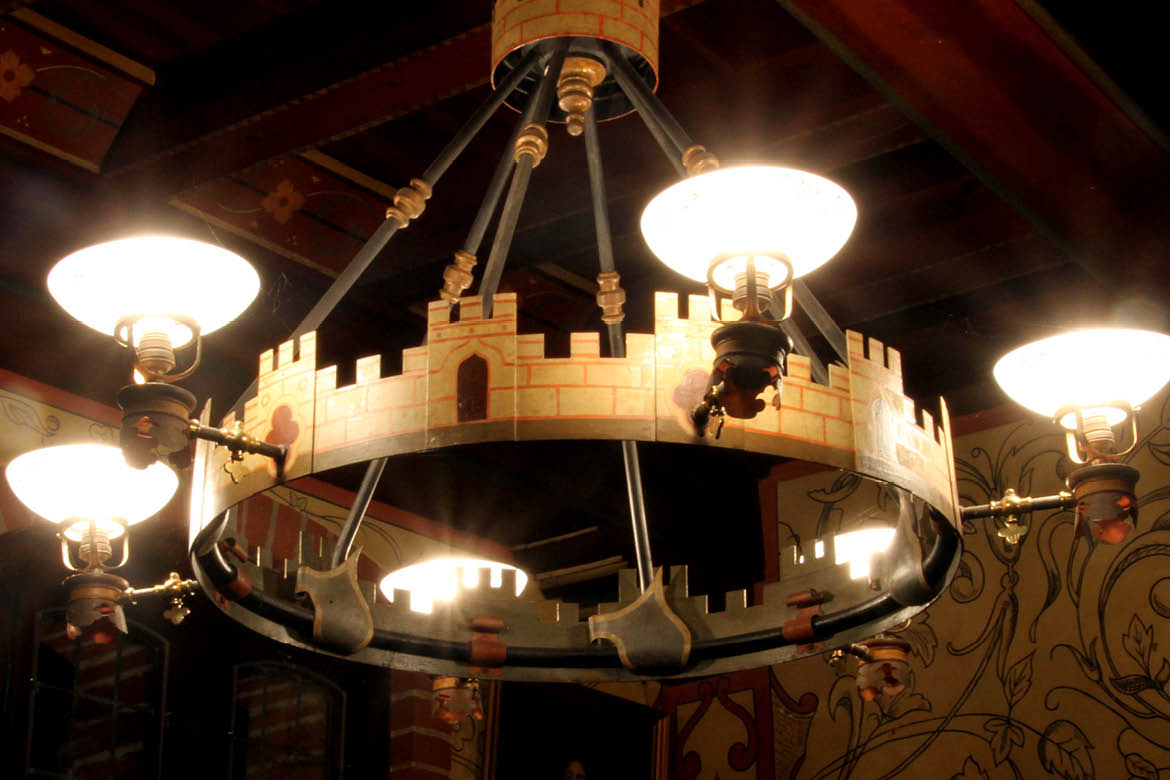The most recent and most thorough reconstruction from 1892 to 1894 was carried out by the architect H. C. Amberg. Outside, he expanded the original town hall with the two-storey building we see down Sønderportsgade.
It was roughly the same style as the original town hall, but inside he was inspired by many different styles and the joy of good craftsmanship.
It is thus largely only Amberg’s idea of a beautiful, medieval style that our guests can experience inside the Old Town Hall. Completely in line with the period’s trends in decorative arts and better building practices.
To the right of the entrance is a small exhibition about Ribe’s city government, commerce and the judiciary.
The room was used as a debt prison in the 1800s before the conversion. Here sat people who could not pay their debts, but everyone else was put in cells on the first floor. At the end of the 19th century, the prison was moved to the Old Town Hall’s neighbor, which is therefore very appropriately called “The Old Prison” today.
The civic hall to the left of the entrance is also called the wedding hall, because many civil weddings take place here every year.
Until the rebuilding in 1892-94, this was where the aldermen and later the members of the city council met. After the rebuilding, the city council moved upstairs and it became even easier for the city’s citizens to use the hall for all kinds of activities.
The hall can still be rented and therefore used for both concerts, lectures and receptions.
The interior design and style of the entire room was decided in connection with H. C. Amberg’s restoration and remodeling of the house.
The staircase’s new monkstone masonry, the glazed stones, the areas of the rooms with frescoes, the wooden panels and the rustic infill doors were designed by Amberg, and in line with the trend of the time, he was probably responsible for all the details, right down to the design of the cast iron stoves and chandeliers.
The beautiful old table is over 300 years old and stands in the hall together with modern chairs designed by Kåre Klindt and an impressive lectern.
The hall’s grand piano has its own history, because it belonged to Rued Langgaard (1893-1952), who is considered one of Denmark’s greatest composers. The beautiful Bechstein grand piano, which dates from the late 19th century, came to the Old Town Hall in 2022 and still has a lovely sound.
The room has served as a courtroom since 1727, even if the building in which the room is located was only built in 1892-94. This is because the original courtroom was integrated into the new building. Most recently, it was the district court that used the room from 1894 to 2007.
The room can be rented and used for meetings, receptions, lectures and workshops.
The impressive hall was created as part of the extensive remodeling project 1892-94, and the interior design is the work of H. C. Amberg alone.
It is his very personal approach to materials and design that you experience, and like the Citizens’ Hall and the entrance area, the City Council Hall is a fine example of the end of the 19th century’s fascination with good craftsmanship and the desire to make all details fit together in one style.
It was here that all city council meetings were held from 1894 until the structural reform in 2006, when Ribe and Esbjerg municipalities were merged
The room can be rented and used for meetings, receptions, lectures and workshops.
Ribe’s mayor’s chain is on display in the City Hall. The pendant represents the iron hand that sat on the town’s Nørreport as a symbol of Ribe’s police authority.
The chain is from 1966 and made by goldsmith and jeweler Frantz Hingelberg in Aarhus.
The Coffee Room got its name because it was where the city councilors retreated to drink coffee after the city council meetings. It also functioned as a committee room, so many important decisions were also made here.
The low-ceilinged room has a different intimate atmosphere than the impressive city council chamber and works well for smaller meetings and lectures.
De små rum langs gangen blev brugt til flere forskellige arkiver efter ombygningen. Både byen, herredet og retsvæsnet havde brug for plads til deres papirer.
The small rooms along the corridor were used for several different archives after the conversion. Both the city, the county and the judiciary needed space for their papers.
Most of the rooms are used for a small exhibition about the composer Rued Langgaard, while one can be rented and used as, for example, group room in connection with larger meetings in the halls.
lej lokale knap
